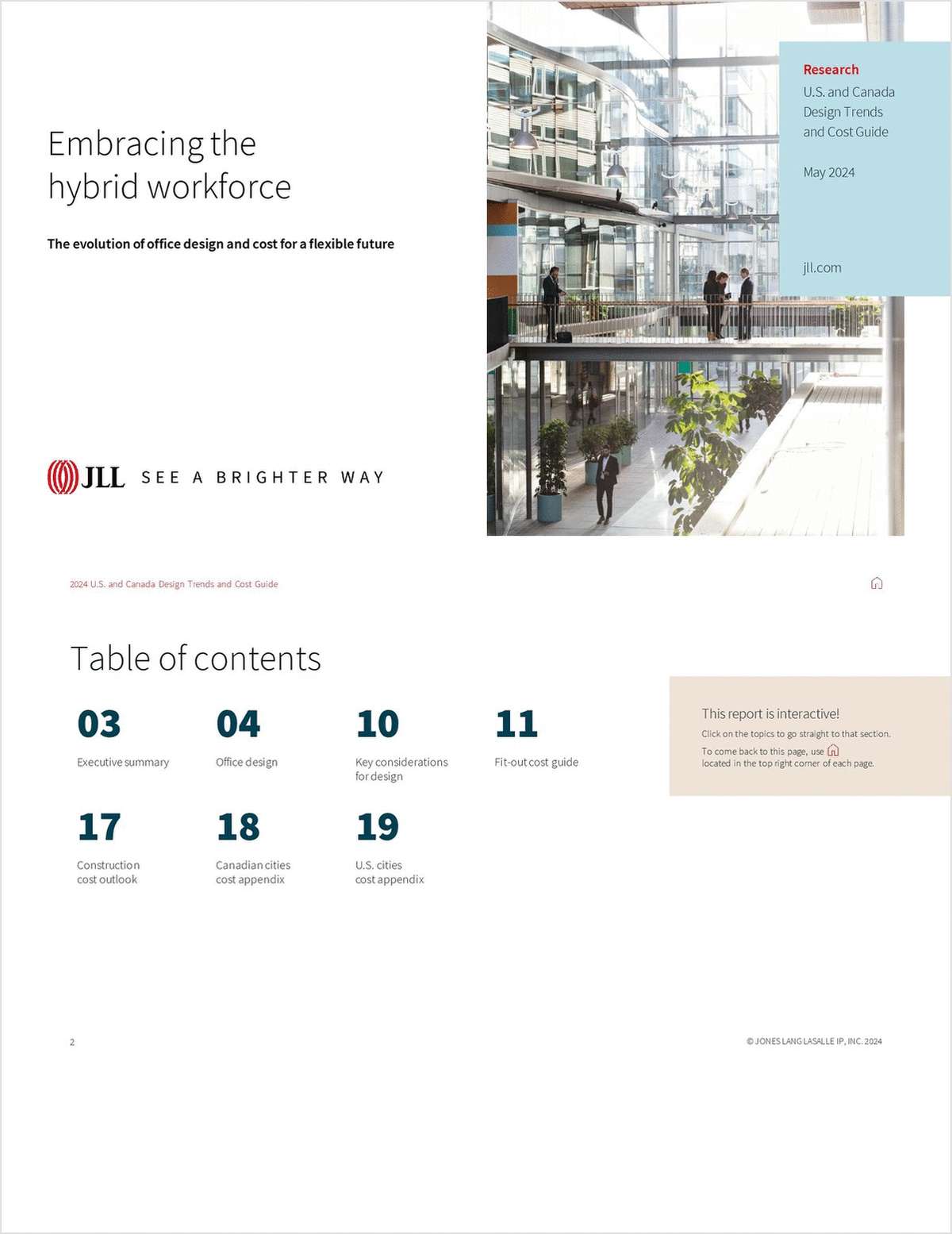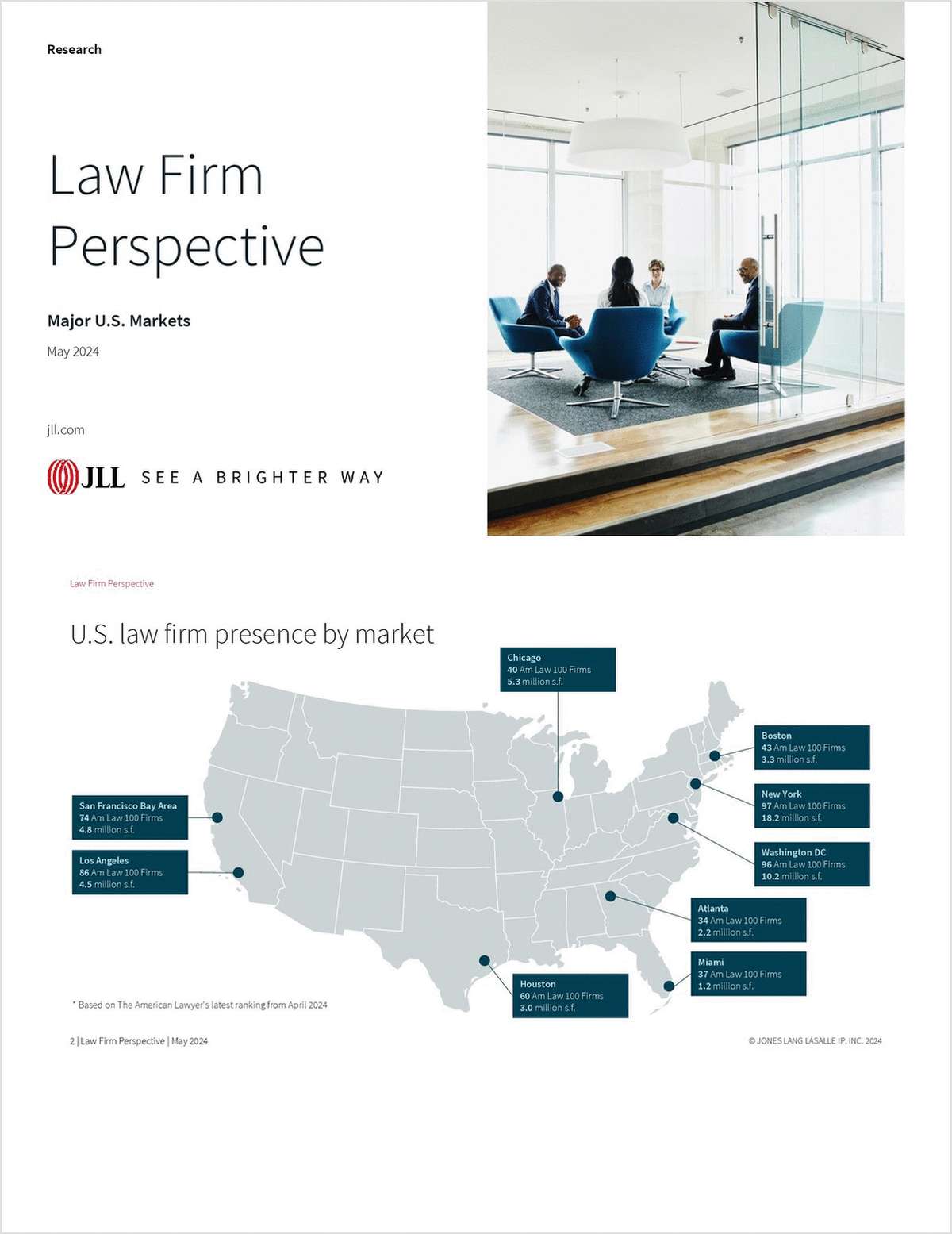Barnes & Thornburg Budgeting Push Pays Off in Record Revenue
Gross revenue jumped 7 percent last year at Barnes & Thornburg, where a push to use budgets and legal project management has grown to encompass 20 percent of the firm's work.
March 09, 2018 at 05:11 PM
4 minute read

Over the past few years, Barnes & Thornburg has developed a budgeting program known as BT ValueWorks that one-third of its partners are using to provide certainty to clients on their bills. It is being used currently for $80 million worth of work, a full 20 percent of the firm's revenue.
Something else is becoming predictable at Barnes & Thornburg. It has set revenue records for 19 straight years dating back to 1999, the latest year data is available from The American Lawyer.
Last year, gross revenue at the Indianapolis-based Am Law 100 firm grew nearly 7 percent, to $395.5 million, as profits per equity partner also rose 6.8 percent, to $905,000, according to preliminary data for the Am Law 100. Revenue per lawyer grew 7.5 percent, to $747,000, as head count at Barnes & Thornburg stayed basically flat at 529 lawyers.
 The firm has an impressive profit margin—52 percent—with is partly related to its rather low leverage. Its leverage, the number of lawyers minus equity partners per each equity partner, shrunk from 1.34 associates per partner in 2016, to 1.27 in 2017.
The firm has an impressive profit margin—52 percent—with is partly related to its rather low leverage. Its leverage, the number of lawyers minus equity partners per each equity partner, shrunk from 1.34 associates per partner in 2016, to 1.27 in 2017.
Robert Grand, Barnes & Thornburg's managing partner, said the firm's financial results are in part a reflection of its growth in the past few years in Dallas, Los Angeles, Minneapolis and other cities.
Los Angeles, an office opened in 2011, now has nearly 50 lawyers, making it the firm's third biggest outpost. There are 17 lawyers at Barnes & Thornburg in Dallas, where the firm set up shop in 2015. This month, Barnes & Thornburg opened a San Diego office after recruiting former Cooley venture capital partner Troy Zander.
“What we've done in the past several years is move this to a national firm with a number of opportunities in markets that are hot,” Grand said.
As for its budgeting program, Grand said BT ValueWorks has been well-received by clients who appreciate billing certainty and also insight into those staffing certain engagements. Grand said clients can see the number of diverse and women lawyers working on their matters through the program. And partners fearful that a budget will constrict their practice or their billings have learned otherwise, he said.
“It's not what it's perceived to be—in the sense of a negotiation [on price]—it's much more of a dialogue,” Grand said. “And once people understand that, they realize it's OK. They've got a budget. They've got an idea of the resources they will need. And they know what is important. And lawyers tell me it's helpful to go into a meeting and say they know what they did in 15 other deals like this.”
Grand said the firm hired 17 laterals last year and has already added 15 this year, including seven in Minneapolis alone comprised of a four-lawyer family law team from Minneapolis' Lindquist & Vennum; intellectual property litigator Bruce Little; and two restructuring partners from Fox Rothschild.
Grand said lateral recruiting has been a strong focus of his, but stressed the importance of having a team of professionals committed to integrating those partners with their new colleagues and helping them market themselves once they join the firm.
“If you're winning, take credit for winning, because when you're losing they're going to blame the hell out of you,” Grand joked. “But I've got to say we're doing pretty well in that situation [of lateral recruiting]. We've been very aggressive.”
This content has been archived. It is available through our partners, LexisNexis® and Bloomberg Law.
To view this content, please continue to their sites.
Not a Lexis Subscriber?
Subscribe Now
Not a Bloomberg Law Subscriber?
Subscribe Now
NOT FOR REPRINT
© 2024 ALM Global, LLC, All Rights Reserved. Request academic re-use from www.copyright.com. All other uses, submit a request to [email protected]. For more information visit Asset & Logo Licensing.
You Might Like
View All
'Further Investment in Power' Will Drive Big Law Business—But What About Clean Energy Projects?
6 minute read
Morrison & Foerster Doles Out Year-End and Special Bonuses, Raises Base Compensation for Associates


Eckert Seamans Snags Reed Smith Global Financial Intelligence Director
3 minute readTrending Stories
- 1Call for Nominations: Elite Trial Lawyers 2025
- 2Senate Judiciary Dems Release Report on Supreme Court Ethics
- 3Senate Confirms Last 2 of Biden's California Judicial Nominees
- 4Morrison & Foerster Doles Out Year-End and Special Bonuses, Raises Base Compensation for Associates
- 5Tom Girardi to Surrender to Federal Authorities on Jan. 7
Who Got The Work
Michael G. Bongiorno, Andrew Scott Dulberg and Elizabeth E. Driscoll from Wilmer Cutler Pickering Hale and Dorr have stepped in to represent Symbotic Inc., an A.I.-enabled technology platform that focuses on increasing supply chain efficiency, and other defendants in a pending shareholder derivative lawsuit. The case, filed Oct. 2 in Massachusetts District Court by the Brown Law Firm on behalf of Stephen Austen, accuses certain officers and directors of misleading investors in regard to Symbotic's potential for margin growth by failing to disclose that the company was not equipped to timely deploy its systems or manage expenses through project delays. The case, assigned to U.S. District Judge Nathaniel M. Gorton, is 1:24-cv-12522, Austen v. Cohen et al.
Who Got The Work
Edmund Polubinski and Marie Killmond of Davis Polk & Wardwell have entered appearances for data platform software development company MongoDB and other defendants in a pending shareholder derivative lawsuit. The action, filed Oct. 7 in New York Southern District Court by the Brown Law Firm, accuses the company's directors and/or officers of falsely expressing confidence in the company’s restructuring of its sales incentive plan and downplaying the severity of decreases in its upfront commitments. The case is 1:24-cv-07594, Roy v. Ittycheria et al.
Who Got The Work
Amy O. Bruchs and Kurt F. Ellison of Michael Best & Friedrich have entered appearances for Epic Systems Corp. in a pending employment discrimination lawsuit. The suit was filed Sept. 7 in Wisconsin Western District Court by Levine Eisberner LLC and Siri & Glimstad on behalf of a project manager who claims that he was wrongfully terminated after applying for a religious exemption to the defendant's COVID-19 vaccine mandate. The case, assigned to U.S. Magistrate Judge Anita Marie Boor, is 3:24-cv-00630, Secker, Nathan v. Epic Systems Corporation.
Who Got The Work
David X. Sullivan, Thomas J. Finn and Gregory A. Hall from McCarter & English have entered appearances for Sunrun Installation Services in a pending civil rights lawsuit. The complaint was filed Sept. 4 in Connecticut District Court by attorney Robert M. Berke on behalf of former employee George Edward Steins, who was arrested and charged with employing an unregistered home improvement salesperson. The complaint alleges that had Sunrun informed the Connecticut Department of Consumer Protection that the plaintiff's employment had ended in 2017 and that he no longer held Sunrun's home improvement contractor license, he would not have been hit with charges, which were dismissed in May 2024. The case, assigned to U.S. District Judge Jeffrey A. Meyer, is 3:24-cv-01423, Steins v. Sunrun, Inc. et al.
Who Got The Work
Greenberg Traurig shareholder Joshua L. Raskin has entered an appearance for boohoo.com UK Ltd. in a pending patent infringement lawsuit. The suit, filed Sept. 3 in Texas Eastern District Court by Rozier Hardt McDonough on behalf of Alto Dynamics, asserts five patents related to an online shopping platform. The case, assigned to U.S. District Judge Rodney Gilstrap, is 2:24-cv-00719, Alto Dynamics, LLC v. boohoo.com UK Limited.
Featured Firms
Law Offices of Gary Martin Hays & Associates, P.C.
(470) 294-1674
Law Offices of Mark E. Salomone
(857) 444-6468
Smith & Hassler
(713) 739-1250










